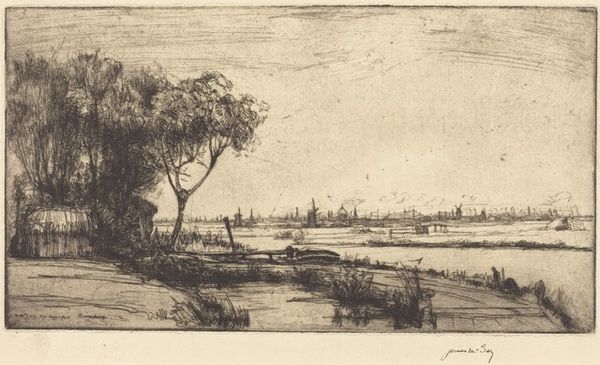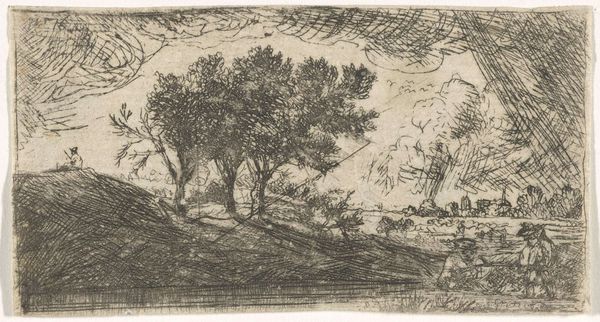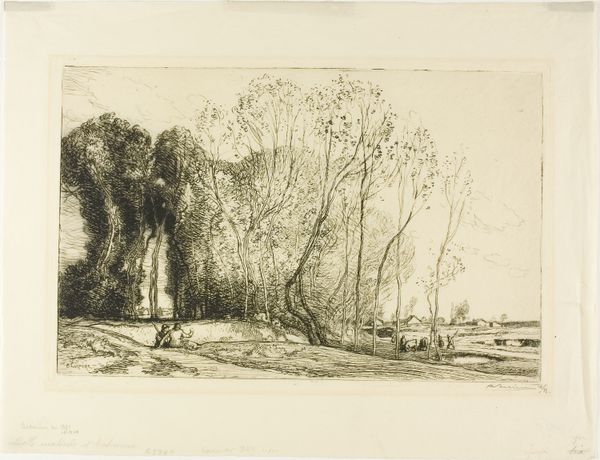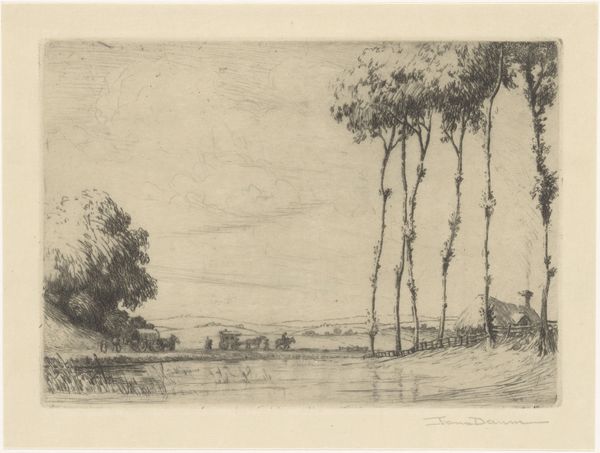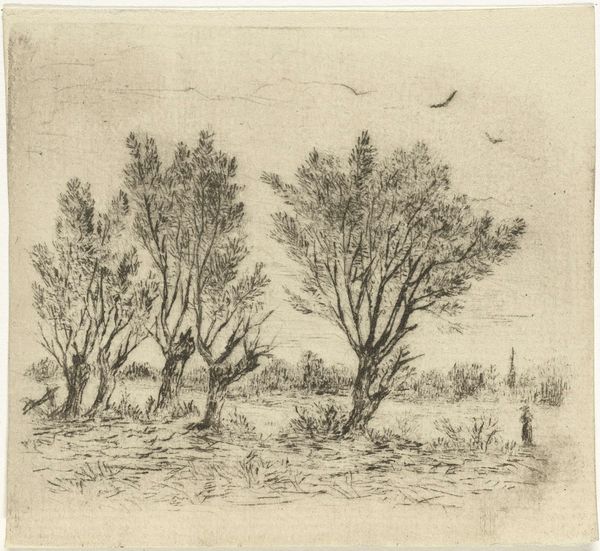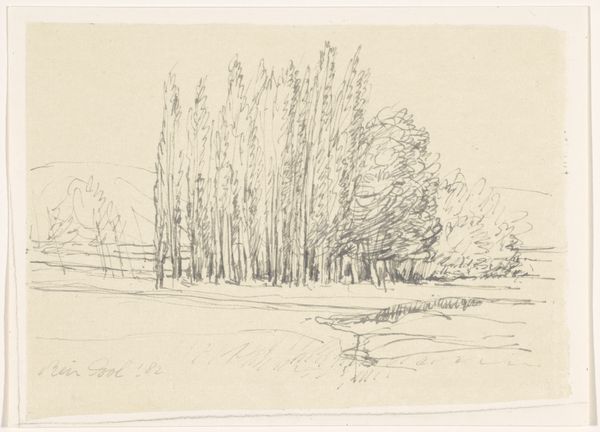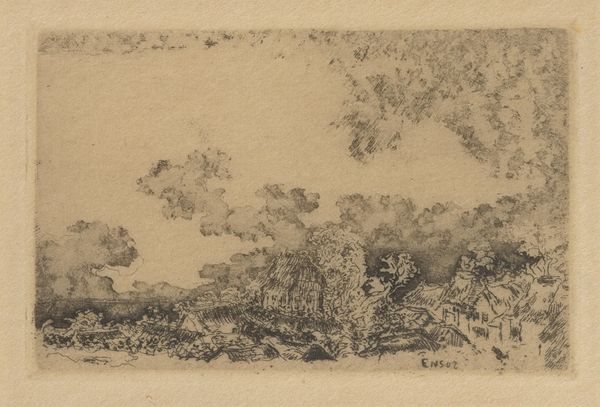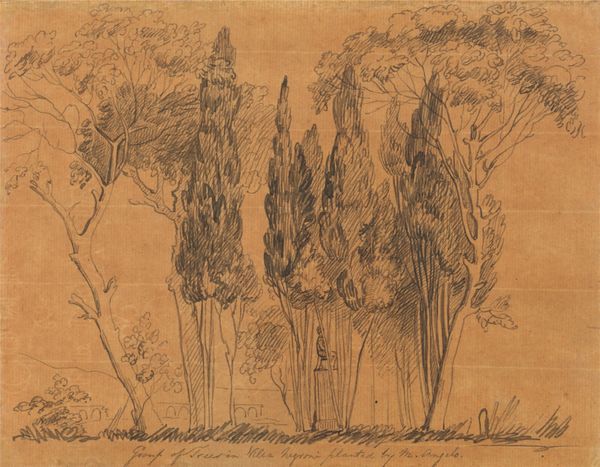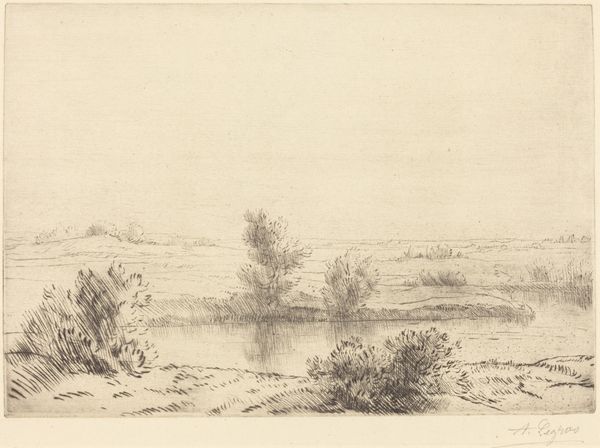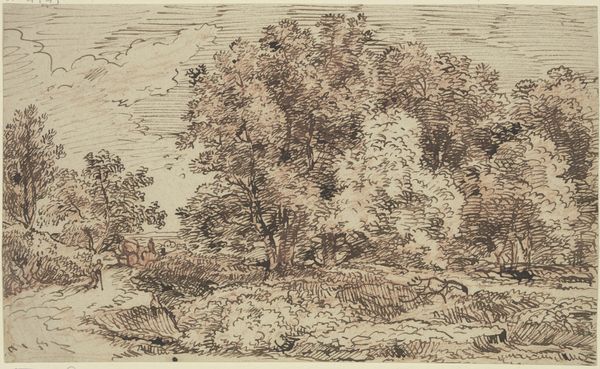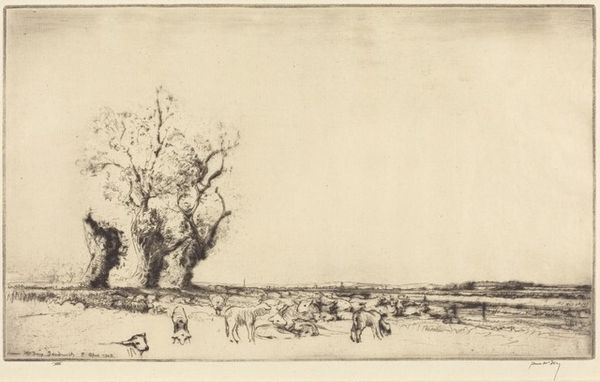
Copyright: National Gallery of Art: CC0 1.0
Curator: Let’s turn our attention to James McBey's etching from 1911, titled "Avila." This print captures the cityscape, rendered in a style reminiscent of Impressionism. Editor: My first impression is of a sort of faded dream, almost sepia-toned in its stillness. The skeletal trees feel a little melancholy, reaching for a sky that isn’t quite there. Curator: Absolutely, that muted palette and the atmospheric perspective contribute to a certain nostalgic feeling. "Avila," the city itself, situated in Spain, boasts remarkably preserved medieval walls; here, McBey focuses less on celebrating its architectural grandeur, instead offering us a more nuanced interpretation. Editor: You can feel that history humming beneath the surface. The details are just suggestive, like ghosts. It's as if he's inviting us to fill in the gaps, to project our own sense of time and memory onto the scene. I get a similar feeling from some Corots, but stripped bare. Curator: Precisely. And in terms of historical context, McBey created this work during a time when Europe was on the cusp of significant change. Prints and etchings were also increasingly accessible modes for artmaking, so this landscape connects with themes related to urbanization and mobility. I find that "Avila," rather than being a pure landscape, presents an environment altered through social and material conditions. Editor: I see that. It’s not just a postcard view. There is almost a political element suggested by that far off walled city that contrasts with those trees struggling right up close. It gives a stark picture that’s thought-provoking. The foreground seems… precarious? Almost barren compared to the stoic architecture. Curator: Yes, precarious and somewhat unmoored. Which perhaps, reflects anxieties circulating during that era of industrialization and changing cultural values. The walls stand defiant. McBey reminds us, if indirectly, of shifting cultural geographies, power, and the ways we relate to a landscape deeply imprinted by humans. Editor: It makes me want to look deeper than just pretty scenery. More than a scene to behold, it is one to consider carefully. Thank you. Curator: Indeed. It provides insights beyond surface level observation. An exploration into our perceptions of location, the human imprint, and the enduring power of landscapes.
Comments
No comments
Be the first to comment and join the conversation on the ultimate creative platform.

